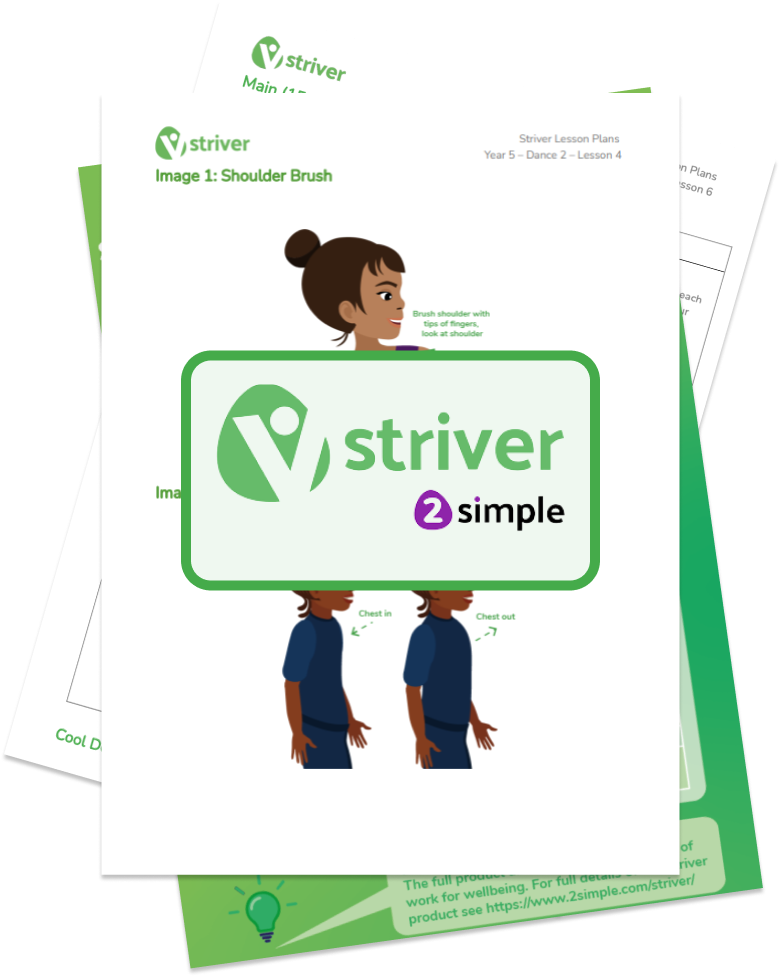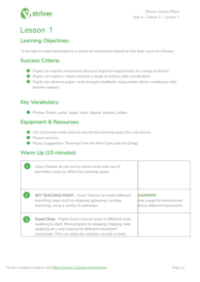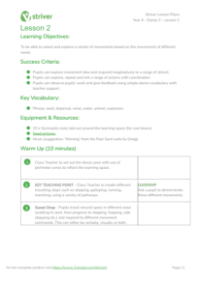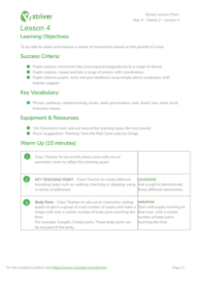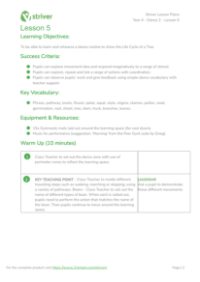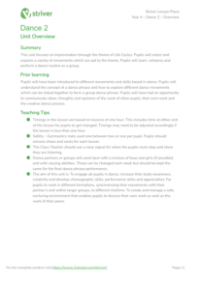Dance 2 - Lesson 6

Physical Education Resource Description
In the sixth lesson of the Year 4 Dance 2 series, students are tasked with the creative and expressive challenge of performing a dance routine that depicts the Life Cycle of a Tree. The learning objectives set the stage for pupils to explore and respond to stimuli imaginatively, coordinate a range of actions, and provide feedback using simple dance vocabulary with teacher support. The success criteria ensure that students can explore movement ideas, repeat and link actions with coordination, and observe and critique each other's work. Key vocabulary for this lesson includes terms related to both dance and botany, such as 'phrase', 'pathway', 'complimenting', 'levels', and various parts of a tree and its growth stages, like 'flower', 'petal', 'sepal', 'pollen', 'seed', 'germination', 'root', 'shoot', 'tree', 'stem', 'trunk', 'branches', and 'leaves'. To facilitate this immersive experience, equipment such as gymnastic mats for the cool-down and music suggestions, like 'Morning' from the Peer Gynt suite by Grieg, are recommended.
The lesson is structured to begin with a 10-minute warm-up where the class teacher sets out the dance zone and models various travelling steps, including walking, marching, or skipping along different pathways. Pupils get to lead as well, demonstrating these movements, and engage in playful activities like mimicking different 'beans' with corresponding actions. The main 30-minute session involves rehearsing and performing the dance routine that tells the story of a tree's life cycle, starting from a seed and moving through growth to death. The 'Seed Drill' and various other creative movements allow students to embody the different stages of a tree's life through dance. They will work in groups to rehearse their individual phrases before coming together for a class performance, which is recorded for later observation and evaluation. The lesson wraps up with a 10-minute cool-down involving stretching and breathing exercises on gymnastic mats, allowing students to reflect on their physical activity and the creative process they've just engaged in.

